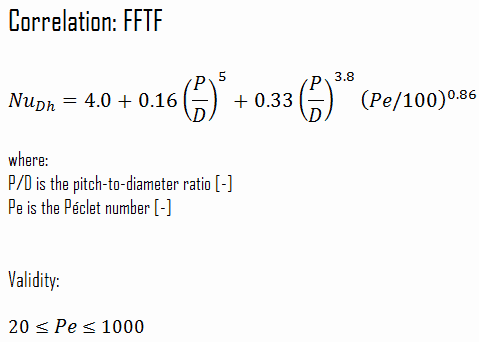Sodium-cooled fast reactors (SFRs) are the most common fast reactor design. They use molten sodium or a eutectic sodium-potassium alloy (NaK) as the reactor coolant. Melting and boiling points of sodium and NaK are:
-

Source: wikipedia.org License: Public domain sodium
- melting point – 97.72°C
- boiling point – 883°C
- NaK – eutectic mixture
- melting point – (-12°C)
- boiling point – 785°C

Source: wikipedia.org
NaK containing 40% to 90% potassium by weight is liquid at room temperature. The eutectic mixture consists of 77% potassium and 23% sodium. Sodium and NaK do not corrode steel significantly and are compatible with many nuclear fuels, allowing for a wide choice of structural materials. Because sodium reacts violently with water, however, SFRs require the placement of an intermediate heat exchanger between the reactor core and the steam generator. This hi-tech technology requires a lot of experience. Therefore, only a few countries have developed their own fast reactor design.
Properties of Liquid Metals
Properties of Liquid Metals
In physics, liquid metal consists of alloy with very low melting points, which form a eutectic that is liquid at room temperature. In reactor engineering, liquid metals are alloys with low melting points allowing for reactor coolant to be liquid in operating range of temperatures (usually above the room temperature).

Liquid metals can be used as a reactor coolant because they have excellent heat transfer properties and can be employed in low-pressure systems, as is the case of sodium-cooled fast reactors (SFRs). The unique feature of metals as far as their structure is concerned is the presence of charge carriers, specifically free electrons, giving them high electrical conductivity high thermal conductivity. The use of liquid metal coolants made it possible to provide a high rate of heat transfer in power plants as well as the temperatures of working surfaces of their constructions close to coolant temperature.
Moreover, liquid metals used in reactor engineering are very weak absorbers of neutrons, allowing liquid metal reactors to operate with a fast neutron spectrum. A liquid metal fast reactor is a high power density reactor, which does not need a neutron moderator.
The main differences between thermal and fast reactors are, of course, in neutron cross-sections that exhibit significant energy dependency. It can be characterized by the capture-to-fission ratio, which is lower in fast reactors. There is also a difference in the number of neutrons produced per one fission, which is higher in fast reactors than in thermal reactors. These very important differences are caused primarily by differences in neutron fluxes. Therefore, it is important to know detailed neutron energy distribution in a reactor core.
The disadvantage of many liquid metals is their high chemical activity at interaction with oxygen, water, and structural materials, which may cause heat transfer deterioration in the plant under certain conditions.
Nusselt Number for Liquid Metal Reactors
A liquid metal cooled reactor is an advanced type of nuclear reactor where the primary coolant is a liquid metal. Liquid metals can be used as a coolant because they have excellent heat transfer properties and can be employed in low-pressure systems, as is the case of sodium-cooled fast reactors (SFRs). The unique feature of metals as far as their structure is concerned is the presence of charge carriers, specifically free electrons, giving them high electrical conductivity high thermal conductivity. This very high thermal conductivity, together with low viscosity causes, that typical heat transfer correlations (e.g., Dittus-Boelter) can not be used.
Heat transfer coefficients for sodium flow through the fuel channel are based on the Prandtl number and Péclet number. Pitch-to-diameter (P/D) also enters many heat transfer calculations in liquid metal reactors. Convective heat transfer correlations are usually presented in terms of Nusselt number versus Péclet number. Typical Péclet numbers for normal operation are from 150 to 300 in the fuel bundles. As for other flow regimes, the Nusselt number and a given correlation can be used to determine the convective heat transfer coefficient.


